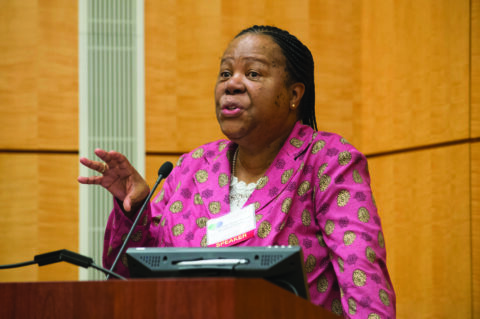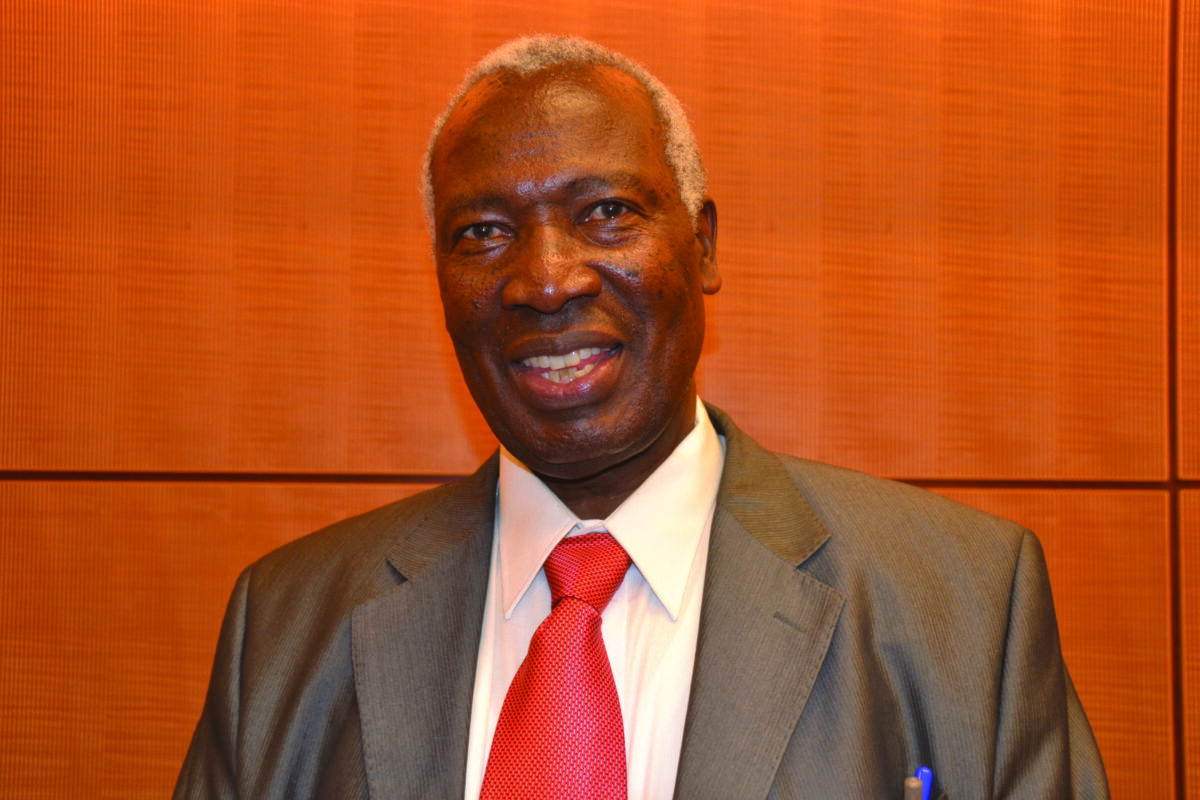While dozens of African presidents were in Washington, D. C., in early August to meet with U.S. president Barack Obama during the first U.S.-Africa Leaders Summit, African science ministers and science academy officials held their own gathering at the U.S. National Academy of Sciences (NAS) to focus on challenges and opportunities related to environmental protection, climate change, development, health, poverty, technology, and other issues.
“We believe, in Africa, that strengthening local science, technology, and innovation institutions on the continent is a very obvious way to invest in addressing our development challenges,” Grace Naledi Mandisa Pandor, minister of science and technology for South Africa, said at the 5 August Symposium on Science, Technology and Innovation for Economic Growth and Development in Africa.

Participants at the symposium included leaders from science academies across Africa that are partners in the African Science Academy Development Initiative (ASADI), which is a collaboration between NAS and eight African science academies—in Cameroon, Ghana, Kenya, Nigeria, Senegal, South Africa, and Uganda as well as the pan-African Academy of Sciences. The program’s objectives have included building the academies’ governance, advisory, and support capacities and developing a more welcoming environment for the academies’ advice.
“Given that we live among some of the poorest people on the planet, per capita, funding for our universities is an important imperative,” Pandor said. She added that the South African government recently agreed on a goal of trying to direct 1.5% of the country’s gross domestic product toward research and noted that other countries have adopted polices for directing 1% to research and development. “A lot of countries have not reached that target, but it is on the policy platform,” she said.
Developmental Aspects of Disasters
Margareta Wahlstrom, undersecretary for the United Nations International Strategy for Disaster Risk, focused on efforts to reduce the impacts of disasters “for the overall purpose of contributing to a more sustainable and viable development agenda.” She said that Africa “is not [the] home of the most dramatic disasters in the world, but indeed is a home of many of the most dramatic impacts of climate and disaster risk today because of a very vulnerable environment, but also a young population, a strong economic growth—even if it is uneven—a very rapid urbanization, all positive things for economic growth, but also issues that really contribute to strengthen the exposure to risks.”
Wahlstrom said that there needs to be more focus within the agendas of development and disaster risk reduction on the developmental aspects of disasters. “In many countries, still, the disaster is an event. It is dealt with by disaster management authorities, and the whole integration of what you do to prevent that disaster the next time, or at reducing the impact of it, does not have a very strong institutional home in most countries,” she said.
Weakness in the Atmospheric Sciences
At the symposium, Roseann Diab, executive officer of the Academy of Science of South Africa and an atmospheric scientist, spoke with Eos about the state of the atmospheric sciences in South Africa. “What really alarms me is that climate science is just such an important part of all the issues that we have to contend with, and there are so few specialists—atmospheric scientists and climate scientists—being trained in our country, South Africa, and I’m sure it’s the same situation across Africa,” she said. “To meet the demands of all of the challenges that we face in climate science, we are going to have to really up the game in terms of the number of people who are being trained.”
Diab said that while there are many atmospheric scientists in other countries, South Africa needs its own experts. “One needs to understand what are going to be the regional impacts of climate, and even if you are looking at some of the global circulation models and looking at predictions of climate for the future, it is only through understanding the regional climates that you are really going to make progress in terms of understanding the impacts. So I think local knowledge embedded in the region you come from is just so critical.”
The Need to Mainstream Ideas
Michieka Ratemo Waya, honorary secretary of the Kenya National Academy of Sciences, told Eos that his organization is hoping that the parliament may approve an act to make the academy an autonomous independent organization. Waya said his biggest headaches related to the organization include the adoption and mainstreaming of some of the ideas brought about by the academy. He noted that an example is the dangers of tobacco smoking, and that although the academy has focused on this, many people remain unconvinced. Waya noted that another concern is the need to establish a bigger and more robust Kenyan academy, which he mentioned currently has about six staff members.
K. Mosto Onuoha, vice president of the Nigerian Academy and Shell Professor of Geology at the University of Nigeria, commented that the symposium is important because of the problem of energy in his country and elsewhere in Africa. “The resources are available. Turning the resources into supplies that would meet demand is a big issue in Africa,” he said. Onuoha stated his own country “is a paradox.” Nigeria, which is the largest oil exporting country in Africa, produces about 2.5 million barrels of oil per day yet is also a net importer of refined products, he added. “Over 30 years, there has been little or no investment in refining, and that has been a major problem. So we spend a lot of our money importing.”
Other concerns Onuoha cited are what he stated has been the neglect of the nation’s solid mineral sector—which he said collapsed under successive military regimes—and insufficient attention to education. However, he mentioned there are moves now to encourage young people to again go into scientific areas.
Next Steps for Collaboration
Patrick Kelley, director of NAS’s board on African Science Academy Development, told Eos that with the ASADI collaboration nearly 10 years old, the board is exploring further collaboration with African science academies that would complement and build upon the foundation created over the past decade. “The primary goal of the ASADI program was to build the capacity of eight African science academies, and they have come a long way since we started. Now the time is ready for a different form of engagement, because they are very much able to engage at a different level,” he said. Kelley mentioned that one option is for NAS to support some of the more established African academies in being continental mentors.
“We have gone much further than we expected” with ASADI, Kelly continued. “We have provided a lot of support from the U.S. for ASADI. But now quite a few of the academies are standing on their own, doing productive things, maintaining serious programs with overwhelmingly Africa-based [support] if not support based in their own country. And they have developed more and more systematic procedures for how to go about producing work of as high a quality as possible.”
For more information, see https://www.nationalacademies.org/asadi/.
—Randy Showstack, Staff Writer
© 2014. American Geophysical Union. All rights reserved.
© 2014. American Geophysical Union. All rights reserved.

